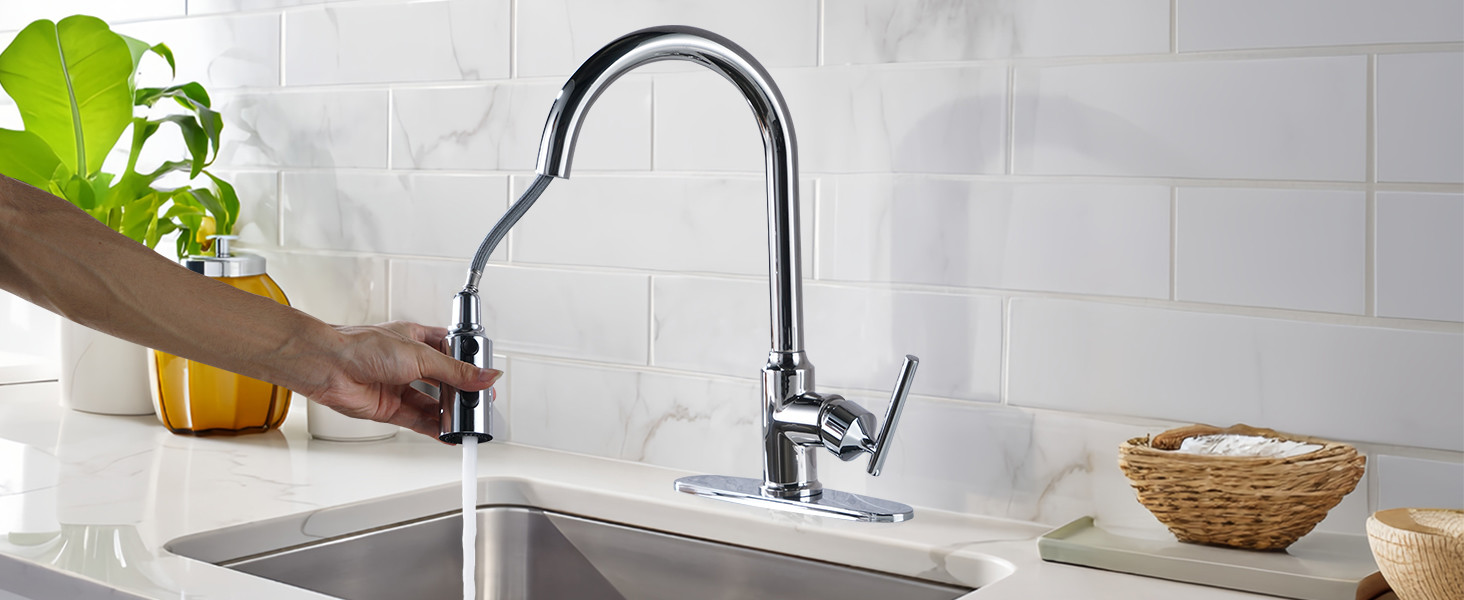
Fixing a faucet that’s missing parts can seem like a daunting task, but with a bit of patience and the right tools, you can easily get your faucet back in working order. Whether you’re dealing with a leaky faucet or one that simply won’t turn on, missing parts can often be the root cause of the problem. In this guide, we’ll walk you through the steps to diagnose the issue and fix a faucet with missing parts.
Step 1: Identify the Type of Faucet
Before you begin, it’s important to identify what type of faucet you’re dealing with. Faucets generally fall into one of four categories:
Compression Faucets: These are the old-fashioned faucets with separate hot and cold handles. They work by compressing a rubber washer to stop the flow of water.
Ball Faucets: Often found in kitchen sinks, these faucets have a single handle that controls both temperature and water flow. Ball faucets use a special cam and ball assembly to regulate water flow.
Cartridge Faucets: These are commonly seen in bathroom sinks. They feature a single handle or two handles and use a cartridge to regulate the flow of water.
Ceramic Disk Faucets: These faucets are known for their durability and smooth operation. They use a ceramic disc to control water flow, which is highly resistant to wear and tear.
Knowing what type of faucet you have is crucial because different faucets have different parts and methods for fixing them.
Step 2: Turn Off the Water Supply
Before you start working on any faucet, always remember to turn off the water supply. Locate the shut-off valves under the sink and turn them clockwise to close them. If you can’t find the individual shut-off valves, you may need to turn off the main water supply to the house. It’s also a good idea to plug the drain to prevent small parts from falling into it during the repair.
Step 3: Assess the Situation
Now, take a look at the faucet. Is it leaking? Is it hard to turn? Are you missing a handle, a valve, or an internal part? The missing part will typically cause the faucet to malfunction. You’ll want to look for:
Missing or damaged handles: If the handle is loose, broken, or missing, it’s likely you’ll need a new one.
Internal cartridge or valve: Many faucets use a cartridge or valve to control water flow. If these parts are damaged or missing, the faucet may not function properly.
Washers and O-rings: These small rubber components are responsible for sealing the faucet to prevent leaks. If they’re missing or damaged, you’ll experience water leakage.
Take a note of any parts that appear to be missing or worn out. You’ll need to replace them in the next steps.
Step 4: Remove the Handle
To fix a faucet that’s missing parts, you will likely need to remove the handle first. The method for removing the handle depends on the type of faucet you have:
Compression Faucets: Use a screwdriver to remove the screws that hold the handle in place. Some handles may have a decorative cap that hides the screw, so check for this before unscrewing.
Ball Faucets: Remove the handle by unscrewing the retaining nut. You may need a special tool to remove the ball assembly, which can often be found at a hardware store.
Cartridge Faucets: For cartridge faucets, remove the handle by loosening the screw located beneath it. Once the handle is removed, you should be able to see the cartridge or valve inside.
Ceramic Disk Faucets: With ceramic disk faucets, remove the handle by unscrewing it, then take off the decorative covers to access the inner ceramic disk mechanism.
Step 5: Examine the Missing Parts
Once the handle is removed, look at the internal parts of the faucet. Check for any missing, damaged, or corroded components. Common parts that might be missing or broken include:
Cartridges or Valves: If these parts are cracked or missing, they need to be replaced. Cartridges are often the culprit in modern faucets, and replacement ones can be found easily at most hardware stores.
Washers and O-Rings: These parts often wear out and need to be replaced. They help seal the faucet to prevent leaks and ensure smooth operation.
Retaining Nuts and Screws: Sometimes, small screws or retaining nuts can get lost or become stripped, preventing the faucet from operating properly. Replacing these is crucial for securing the faucet and ensuring proper function.
Step 6: Purchase the Replacement Parts
Once you’ve identified the missing or damaged parts, head to your local hardware store or order the parts online. It’s essential to bring the old parts with you to ensure that you purchase the correct replacements. Some faucet manufacturers may offer part numbers on their website, which can also be helpful when looking for a specific part.
Faucet Repair Kits: Many hardware stores sell faucet repair kits, which include various washers, O-rings, and other small parts that are commonly needed for faucet repairs.
Manufacturer-Specific Parts: If your faucet is from a specific manufacturer, it’s a good idea to check their website for replacement parts or visit a store that sells that brand’s products.
Step 7: Install the New Parts
Now that you have the replacement parts, it’s time to install them. This process will vary depending on the type of faucet, but here are some general steps:
Install the Cartridge or Valve: If your faucet uses a cartridge or valve, insert the new one into place. Make sure it fits snugly and aligns with the faucet’s mechanism.
Replace the Washers and O-Rings: If your faucet relies on washers and O-rings, install them in the appropriate locations. These small parts can make a big difference in preventing leaks.
Secure the Handle: Once the internal parts are in place, reattach the handle and secure it with the screws or retaining nuts. Ensure the handle moves smoothly and feels secure.
Step 8: Test the Faucet
Before you finish up, turn the water supply back on and test the faucet. Check for leaks, and make sure the handle operates smoothly. If the faucet still isn’t working properly, double-check that all parts were installed correctly and that the replacement parts are the right fit.
Step 9: Call a Professional (If Necessary)
If your faucet is still malfunctioning after replacing the missing parts, or if you’re unsure about tackling the repair yourself, it might be time to call in a professional plumber. Sometimes, the underlying issue might be more complicated than just a missing part, and a professional will have the tools and expertise to identify and fix the problem.
Conclusion
Fixing a faucet that’s missing parts is a straightforward process as long as you take the time to assess the situation, identify the missing or broken parts, and replace them with the correct components. Whether you’re dealing with washers, cartridges, or O-rings, understanding the inner workings of your faucet will help you make the necessary repairs. With a little effort, you can save money on costly repairs and extend the life of your faucet for years to come!
 WOWOW Faucets
WOWOW Faucets





您好!Please sign in